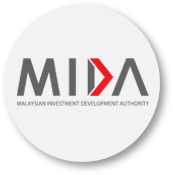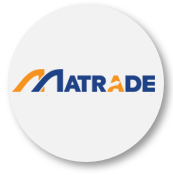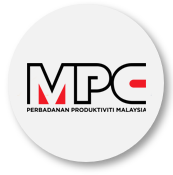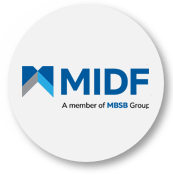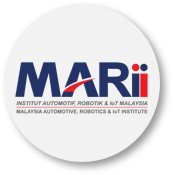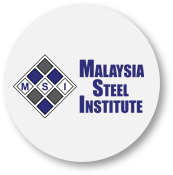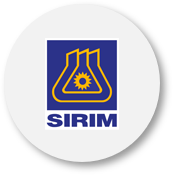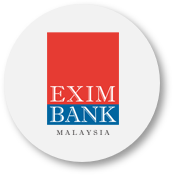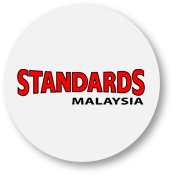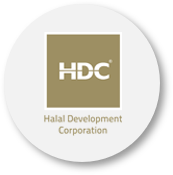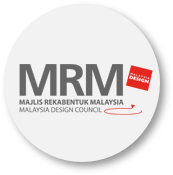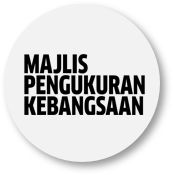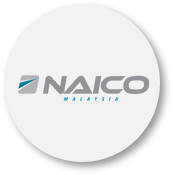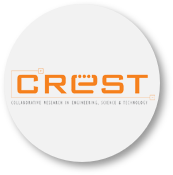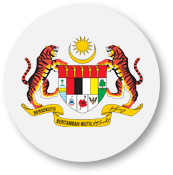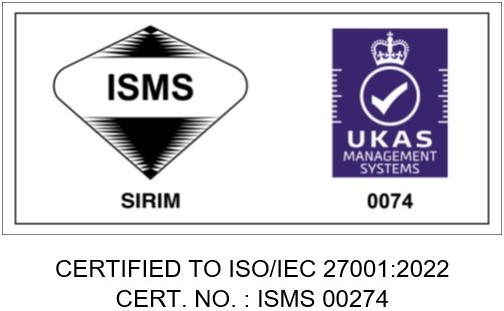- Breakdown by Major Sub-Sectors
- Latex Products Sub-Sector
- The latex products sub-sector is the largest sub-sector within the rubber products industry and comprises 165 manufacturers producing gloves, condom, catheters, latex thread and others.
- This sub-sector accounted for 81 per cent of the rubber total value of exports, largely contributed by gloves, catheters and latex threads.
- Malaysia continues to maintain its position as the world's leading producer and exporter of catheters, latex threads and natural rubber medical gloves.
- Tyres and Tyre-Related Products Sub-Sector
- There are currently 120 companies in the tyres and tyre-related products sub-sector comprising nine tyre producers, while the remaining companies produce retreads, tyre treads for retreading, valves and other accessories.
- There are three major tyre producers producing passenger car tyres, commercial vehicle tyres and earthmover tyres, and another nine manufacturing other types of tyres.
- Industrial and General Rubber Products Sub-Sector
- The industrial and general rubber products sub-sector comprises 187 companies producing a wide range of rubber products such as mountings, beltings, hoses, tubings, seals, and sheetings for the automotive, electrical & electronics, machinery & equipment and construction industries, largely for the domestic market.
- Government's Support
- Economic Transformation Programme (ETP)
-
The rubber industry occupies a key position in our Economic Transformation Programme. A very specific performance target has been set for the industry: its contribution to Gross National income (GNI) is expected to increase from the current RM18.5 billion to RM52.9 billion by 2020.
-
The Government, through the Malaysian Rubber Board (MRB), has identified four Entry Point Projects (EPPs) that will be the primary contributors to this projected GNI growth:
- increasing the average productivity of rubber from the current 1,480kg/ha/year to 2,000kg/ha/year by 2020;
- the replanting of 40,000 hectares every year from now to 2020;
- increasing global market share of latex gloves from the current 62% (valued at RM11 billion) to 65% (worth RM30 billion) by 2020; and
- ensure the commercialisation of Ekoprena and Pureprena (Green Rubber). Felda Rubber Industries Sdn. Bhd. and Mardec Berhad are recipients of the technology for this new generation of latex grade specialty rubbers. They will be the raw materials for the production of high-end rubber products, such as eco-friendly green tyres.
- Provision of Incentives
-
Tax exemption under the Promotion of Investments Act (PIA), 1986 and Income Tax Act, 1967:
- Pioneer Status (tax exemption of 70%-100% of statutory income for a period of 5 - 10 years);
- Investment Tax Allowance (an allowance of 60%-100% on qualifying capital expenditure incurred within a period of 5 years); and
- Reinvestment Allowance (60% on the qualifying capital expenditure incurred and can be offset against 70% of its statutory income for the year of assessment. The RA will be given for a period of 15 years).
- Local companies in the rubber industry reinvesting for expansion purposes are eligible for another round of Pioneer Status or Investment Tax Allowance.
-
Import duty exemption on:
- raw materials used for the production of finished goods for export market, irrespective of local availability;
- raw materials for which grades and specifications are not produced locally for local market; and
- raw materials used to produce nil duty finished goods, irrespective of local availability.
- Current Policies Concerning the Rubber Industry
- Manufacturing License (ML)
- There is no restriction in terms of issuance of Manufacturing License (ML) to undertake the manufacturing activities under this industry.
- Foreign equity holding is allowed without any restriction.
-
Policy on Import of Tyres
-
New Tyres
- In 2004, Ministry of Transport (MOT) became a member of World Forum for Harmonisation of Vehicle Regulations (WP29) working group that requires its members to implement mandatory standards on tyres.
-
Beginning 1 January 2010, MOT has enforced mandatory standards on new tyres as gazetted under the Fourth Schedule, Part II, Customs Order (Prohibition of Imports) 2009 that requires the following standards:
- UN ECE Regulation 30 (E-mark) or FMVSS Standard No. 109 (DOT mark) or MS 149 (MS mark) for Passenger Cars; or
- UN ECE Regulation 54 or FMVSS Standard No. 119 or MS 1394 for Commercial Vehicles;
- New tyre is classified under HS 4011 which do not require AP for import.
- Used and Retreaded Tyres
- Both retreaded and used tyres are classified under the same tariff code, i.e. HS40.12 (Retreaded or used pneumatic tyres):
-
New Tyres
• 4012.11.000 ( Retreaded tyres: motor cars );
• 4012.12.000 ( Retreaded tyres: buses or lorries );
• 4012.19.900 ( Retreaded tyres: others );
• 4012.20.100 ( Used pneumatic tyres: motor cars );
• 4012.20.200 ( Used pneumatic tyres: buses or lorries ), and
• 4012.20.990 ( Used pneumatic tyres: others )
Used Tyre
- The AP requirement for importation of used tyres was imposed since 1 January 2010, as part of the new policy introduced by MOT. The AP will only be issued to retreaders with MS224 certification.
- Rationale:
- to prohibit the influx of sub-standard and cheap used tyres from being sold to end users;
- the influx of sub-standard and cheap used tyres from foreign sources has not only affected retreaders' market share but also jeopardising the safety of road users;
- the Government could monitor the importation of used tyres for retreading companies; and
- signifies Government effort in ensuring the safety of the road users in the country.
Retreaded Tyre
- In accordance to Forth Schedule, Part II, the import of a ‘new' retreaded tyre must be accompanied with a DOT or E-MARK R108/R109 UN ECE Regulation 108/109 (issued by recognised Technical Service) or MS224 certificate (issued by SIRIM).
- Physical inspection by KDRM will determine the accuracy of the tyre classification. If it falls under the used category, the Second Schedule which requires AP from MITI applies.
- Removal of Surgical Gloves from the List of Promoted Activities/Products under the Promotion of Investments Act (PIA), 1986
- Rubber glove was a promoted product since 1970s under the Investment Promotion Act, 1968 and subsequently under the Promotion of Investments Act (PIA), 1986 under latex dipped products.
- Rubber gloves (excluding surgical gloves and safety/special function gloves) were excluded as promoted products since 1991.
- The industry was considered established with more than 600 approvals for Manufacturing Licences (ML) and incentives. To date, 40 companies are in operations.
- Surgical gloves were then removed from the List of Promoted Activities/Products under the PIA, 1986 effective 2 March 2012. The industry was considered established.
- Annexes :
- ANNEX 1 - Details of Approved Projects
- ANNEX 2 - Exports of Rubber Products
- ANNEX 3 - Imports of Rubber Products
- ANNEX 4 - Production
- ANNEX 5 - Sales
- ANNEX 6 - Employment
- ANNEX 7 - List of Promoted Products/Activities
ANNEX 1
Details of Approved Projects
|
Year |
Wholly Foreign Owned |
Wholly Domestic Owned |
Joint-Venture |
Total |
||||
| No. of Projects |
Value |
No. of Projects |
Value |
No. of Projects |
Value |
No. of Projects |
Value |
|
|
2010 |
2 |
8.0 |
10 |
74.9 |
5 |
59.4 |
17 |
142.3 |
|
2011 |
0 |
0.0 |
7 |
109.9 |
5 |
171.0 |
12 |
280.9 |
Source : MIDA
|
Year |
Wholly Foreign Owned |
Wholly Domestic Owned |
Joint-Venture |
Total |
||||
| No. of Projects |
Value |
No. of Projects |
Value |
No. of Projects |
Value |
No. of Projects |
Value |
|
|
2011 |
0 |
0.0 |
4 |
30.6 |
4 |
160.8 |
8 |
191.4 |
|
2012 |
7 |
1,118.7 |
1 |
43.8
|
4 |
44.6 |
12 |
1,207.1 |
Source : MIDA
ANNEX 2
Exports of Rubber Products (RM mil. )
|
Description |
2010 |
Change (%) |
2011 |
2011 |
Change (%) |
2012 |
|
Total Exports |
16,025.6 |
13.6 |
18,205.4 |
11,680.8 |
14.8 |
13,412.5 |
|
Rubber gloves |
8,915.5 |
10.9 |
9,891.5 |
6,440.6 |
8.4 |
6,980.0 |
|
Industrial rubber goods |
5,086.2 |
16.3 |
5,914.5 |
3,648.8 |
31.4 |
4,793.0 |
|
Articles of rubber |
881.3 |
5.3 |
928.4 |
625.2 |
4.2 |
651.7 |
|
Synthetic rubber |
571.2 |
20.7 |
689.3 |
473.8 |
(6.7) |
442.0 |
|
Tyres & tyre related products |
571.3 |
36.8 |
781.6 |
492.4 |
10.8 |
545.7 |
Source: MATRADE
Major Export Destinations (Jan-Aug 2012 )
- China (RM4,070.5 million)
- USA (RM2,593.3 million)
- Germany (RM579.0 million)
- Japan (RM514.8 million)
- Thailand (RM420.6 million)
ANNEX 3
Imports of Rubber Products (RM mil. )
|
Description |
2010 |
Change (%) |
2011 |
2011 |
Change |
2012 |
|
Total Imports |
4,367.7 |
33.3 |
5,824.3 |
3,728.4 |
14.8 |
4,278.6 |
|
Synthetic rubber |
1,899.6 |
45.2 |
2,758.9 |
1,758.7 |
7.1 |
1,883.2 |
|
Tyres & tyre related products |
1,109.8 |
23.3 |
1,368.4 |
891.2 |
17.1 |
1,043.9 |
|
Articles of rubber |
844.7 |
4.2 |
880.5 |
585.5 |
4.3 |
611.0 |
|
Industrial rubber goods |
275.5 |
85.4 |
510.7 |
313.5 |
48.6 |
466.0 |
|
Rubber gloves |
238.2 |
28.3 |
305.7 |
179.5 |
53.0 |
274.6 |
Source: MATRADE
Major Import Sources (Jan-Aug 2012 )
- Thailand (RM826.7 million)
- South Korea (RM649.5 million)
- Japan (RM595.7 million)
- Taiwan (RM403.8 million)
- China (RM363.6 million)
ANNEX 4
Production Index (IPI )
| Jan- Jul |
2011 |
2010 |
||
|---|---|---|---|---|
|
2012 |
2011 |
|||
|
Overall |
174.9 |
168.9 |
171.0 |
150.2 |
|
Tyre and tube industries |
106.7 |
119.8 |
117.8 |
109.3 |
|
Retreading and rebuilding of rubber tyres |
128.2 |
128.0 |
129.6 |
94.8 |
|
Rubber gloves |
177.6 |
167.6 |
173.3 |
142.2 |
|
Other rubber products n.e.c. |
211.2 |
200.1 |
199.3 |
187.7 |
Source: Department of Statistics, Malaysia
Note: Base Year 2005 = 100
ANNEX 5
Sales (RM mil. )
|
Jan- Jul |
2011 |
2010 |
||
|---|---|---|---|---|
|
2012 |
2011 |
|||
|
Total Sales |
9,341.8 |
8,406.1 |
14,613.8 |
13,565.5 |
|
Tyre and tube industries |
1,179.0 |
1,084.6 |
1,883.3 |
1,892.8 |
|
Retreading and rebuilding of rubber tyres |
152.2 |
151.8 |
261.2 |
159.9 |
|
Rubber gloves |
5,543.8 |
4,835.3 |
8,482.7 |
7,785.4 |
|
Other rubber products n.e.c. |
2,466.8 |
2,334.4 |
3,986.5 |
3,727.3 |
Source: Department of Statistics, Malaysia
ANNEX 6
Employment (Persons )
|
Jan- Jul |
2011 |
2010 |
||
|---|---|---|---|---|
|
2012 |
2011 |
|||
|
Total Employment |
65,286 |
61,775 |
60,694 |
61,278 |
|
Tyre and tube industries |
5,552 |
5,473 |
5,488 |
5,358 |
|
Retreading and rebuilding of rubber tyres |
926 |
900 |
879 |
792 |
|
Rubber gloves |
37,249 |
34,276 |
33,635 |
34,590 |
|
Other rubber products n.e.c. |
21,559 |
21,126 |
20,692 |
20,538 |
Source: Department of Statistics, Malaysia
ANNEX 7
GENERAL LIST OF PROMOTED PRODUCTS AND ACTIVITIES FOR RUBBER PRODUCTS INDUSTRY
- Tyres for earthmover, agricultural vehicles, industries vehicles, commercial vehicles, motorcycle and aircraft.
-
Latex products:
- Safety or special function gloves
-
Dry rubber products
- Beltings
- Hoses, pipes and tubings
- Rubber profiles
- Seals, gaskets, washers, packings, rings and rubber linings
- Anti-vibration, damping and sound insulation products
LIST OF PROMOTED PRODUCTS AND ACTIVITIES FOR SMALL SCALE COMPANIES
MANUFACTURE OF RUBBER PRODUCTS
- Moulded rubber products
- Extruded rubber products
- General rubber goods
Last Updated 2015-05-14 11:59:19 by admin2







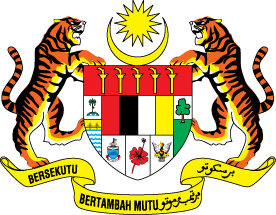





 Home
Home








